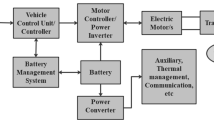Abstract
Safety systems are used for automatic shutdown of a plant when the system state tends to become unsafe. The primary attribute of importance for such systems is the measure of their safety, i.e. Probability of Failure on Demand (PFD). Two-out-of-four systems are gaining importance because they are less vulnerable to spurious trips and thus offer higher availability in addition to higher safety as compared to other coincidence logic systems. IEC 61508 is the internationally accepted standard which outlines the requirements, principles, and methods for safety assessment of safety systems. However, IEC 61508 does not specify PFD of a 2oo4 coincidence logic safety system. Thus, a method using reliability block diagram is investigated in this study to determine simplified algebraic expression for PFD 2oo4 .






Similar content being viewed by others
References
Bennetts RG (1982) Analysis of reliability block diagrams by boolean techniques, IEEE transactions on reliability, vol. R-31, no. 2
Birolini A (2010) Reliability engineering: theory and practice, 6th edn. Springer, Berlin
Börcsök PHJ, Ugljesa 2004 architecture, an advanced processing architecture for safety related systems. In: Proceedings of the 6th WSEAS international conference on applied computer science, Tenerife, Canary Islands, Spain, December 16–18, 2006
Guo H, Yang X (2007) A simple reliability block diagram method for safety integrity verification. Reliab Eng Syst Saf 92:1267–1273
IEC 61508 (2002–2003) Functional safety of electrical/electronic/programmable electronic safety-related systems, International Electrotechnical Commission (IEC), Geneva, Switzerland
Kjørstad M (2005) Models for quantification of availability of continuous control systems and reliability of safety systems, Master’s thesis, Norwegian University of Science and Technology
Kumar M, Verma AK, Srividya A (2007) Analyzing effect of demand rate on safety of systems with periodic proof-tests. Int J Autom Comput 4(4):335–341
Kumar M, Verma AK, Srividya A (2008) Modelling demand rate and imperfect proof-test and analysis of their effect on system safety. Reliab Eng Syst Saf 93:1720–1729
Lee DY, Choi JG, Lyou J (2006) A safety assessment methodology for a digital reactor protection system. Int J Control Autom Syst 4:105–112
Reliability data for safety instrumented systems, PDS data handbook, SINTEF, 2010 Edition
Richard D, Reliability block diagrams, chapter 30, part C –techniques, applied R & M manual for defence systems, GR-77 Issue 2011
The applicability of Markov analysis methods to reliability, maintainability and safety, selected topics in assurance related technologies vol. 10 no. 2 (2003), Reliability analysis center
Torres-Echeverra AC, Martorell S (2011) Modeling safety instrumented systems with MooN voting architectures addressing system reconfiguration for testing. Reliab Eng Syst Saf 96:545–563
Acknowledgments
We thank Shri Y. K. Taly, Head, CnID, BARC, for his invaluable support and guidance.
Author information
Authors and Affiliations
Corresponding author
Rights and permissions
About this article
Cite this article
Haridasan, R., Kumar, M. & Marathe, P.P. Safety analysis of 2oo4 coincidence logic systems. Int J Syst Assur Eng Manag 6, 26–31 (2015). https://doi.org/10.1007/s13198-014-0239-0
Received:
Published:
Issue Date:
DOI: https://doi.org/10.1007/s13198-014-0239-0




